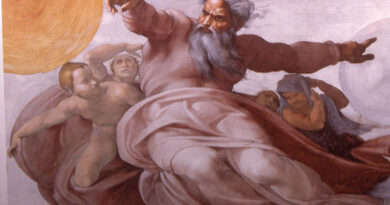Importance of Cross-Cultural Difference to the Society
Culture is defined to be a framework to our lives; something which affects it includes aspects of interaction, social activity, arts and sciences spirituality and language (cultural heritage, 2006). In analyzing and understanding cultural differences, it is vital to scrutinize how members of various cultures see people’s nature, environmental relationships, associations with other people and their temporal and spatial variations diversity is defined as the state of being different from each other. Cultural diversity is seen as the differences exhibited among and within communities. Interactions in the world today are increasing by the years leading to the universe being referred to as a global village. These interactions are within people from different walks and backgrounds of life to communicate across temporal and spatial parameters. The effort put towards these interactions show that cultural diversity is the backbone of most communications. It brings about different needs that can be satisfied by different people from different walks of life with some arguing that it is the backbone of some trading industries. Below, I have analyzed the importance of cultural differences to the society in terms of individuality, technological transfer, business and trade, agricultural developments, specialization and education (Macmillan’s international student’s edition 2010).
Many scholars may have endeavored to put forward many theories regarding the importance of diversity. This may both at work, community or international level. Among the many fundamentally important attributes of cultural diversity or differences include:
Individuality
Humans have an innate need to feel special. To see themselves as having attributes that are different from the rest. The benefits of cultural uniqueness are exhibited especially in tribal societies. Different tribes and communities are usually affiliated with different unique characteristics that make the inhabitants of these societies have a sense of affiliation that is different from others fulfilling the need to feel unique from the rest. In Africa, the Ethiopian and Kenyan community is world famous for their success long distant track events. The Asian community is excellent at mathematics (Sowell, 2011).
Technological transfer
Development of the human race can be attributed to technological advances from one civilization and exchange of this information with other communities. The Chinese were among the first to make technological advances in paper and printing however successful industries in this sector have been located in western countries. The study of philosophy originated in ancient Greek and has advanced all over the world (Funder 2010).
The progress that China has witnessed economically can be seen as a way in which economic technology can be transferred. The cultural differences between America and China had led to China taking a different path economically by embracing communism. However, China borrowed some aspects of free market economy from America. Deng Xiaoping declared china an open economy in 1978 which has led to the phenomenal economic growth. China followed a structured path that ensured gradual market reform.
Business and trade
Cultural diversity has been seen as the backbone of some industries. There has been emphasis on the export industries involving exchange between Third world countries and developed countries. Organic farming is a concept that has taken the world by storm. The products are grown under the best of conditions with very little to none inorganic inputs especially from chemicals. The outputs from this farming system are too expensive for the average African and thus no market exists for the products. However they are in quite high demand in the Western world. Uganda being one beneficiary of the system has become one of the world’s largest producers of organic pineapples and cotton with more than 90% of the markets being in the west (Cultural heritage 2006).
Agricultural developments
People of similar cultures tend to be located in close proximity to one another. The areas in which they are located naturally have vegetation established that is adapted to the specific environment. Sharing of these established plant species with other communities through interaction has led to vast agricultural developments in areas not originally inhabited by these organisms. Malaysia is known for its rubber products. The rubber trees are indigenous to Brazil. Most of the rice grown in Africa today has its roots from the Asian world and the tobacco grown from Argentina.
Specialization
Individuals from different cultural backgrounds are exposed to different conditions that make them better than others when it comes to carrying out certain activities. They tend to dominate certain aspects of industry and development (funder2010). Italians and Germans have respectively made wine and beer for centuries. They have dominated these industries for centuries not only in their home areas but in other areas in the world Especially Argentina and the United States. Italians and the French are associated with exceptional artwork that has sold for billions of dollars worldwide (Sowell 2011).
Conclusion
The US has continued to thrive on the differences of culture amongst its citizens. Many of the world’s races, religions, and cultures have made America their home. Each culture may present a unique perspective on the America we have today. This has led to the claim that no individual group call themselves more American than the other. This interaction of cultures has brought out brilliant citizens who have worked extremely hard to advance America as a land of refuge and opportunities. Diversity presents a clue of the intimate culture and heritage as well as providing lenses through which we can view the struggles of different nationalities to integrate into society. It may also show the integrity and strength of various cultural thinkers and leaders. Without these contradictions that come with diversity, America would not be a nation we see today.
References
Funder, D. C., & Funder, D. C, 2010). The personality puzzle, fifth edition. Instructor’s manual and test-item file. New York: Norton.
Thomas Sowell. Thomas Sowell. Retrieved December 9, 2011, from http://www.tsowell.com.
Anonymous. Cultural heritage (1. publ. Ed.). (2006). London: Routledge.




